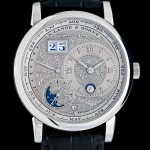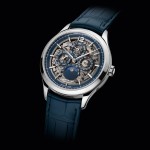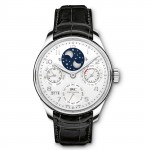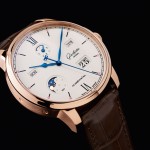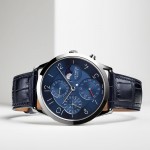Hands On: Piaget Polo Perpetual Calendar Ultra-Thin
A relatively affordable perpetual-calendar sports watch.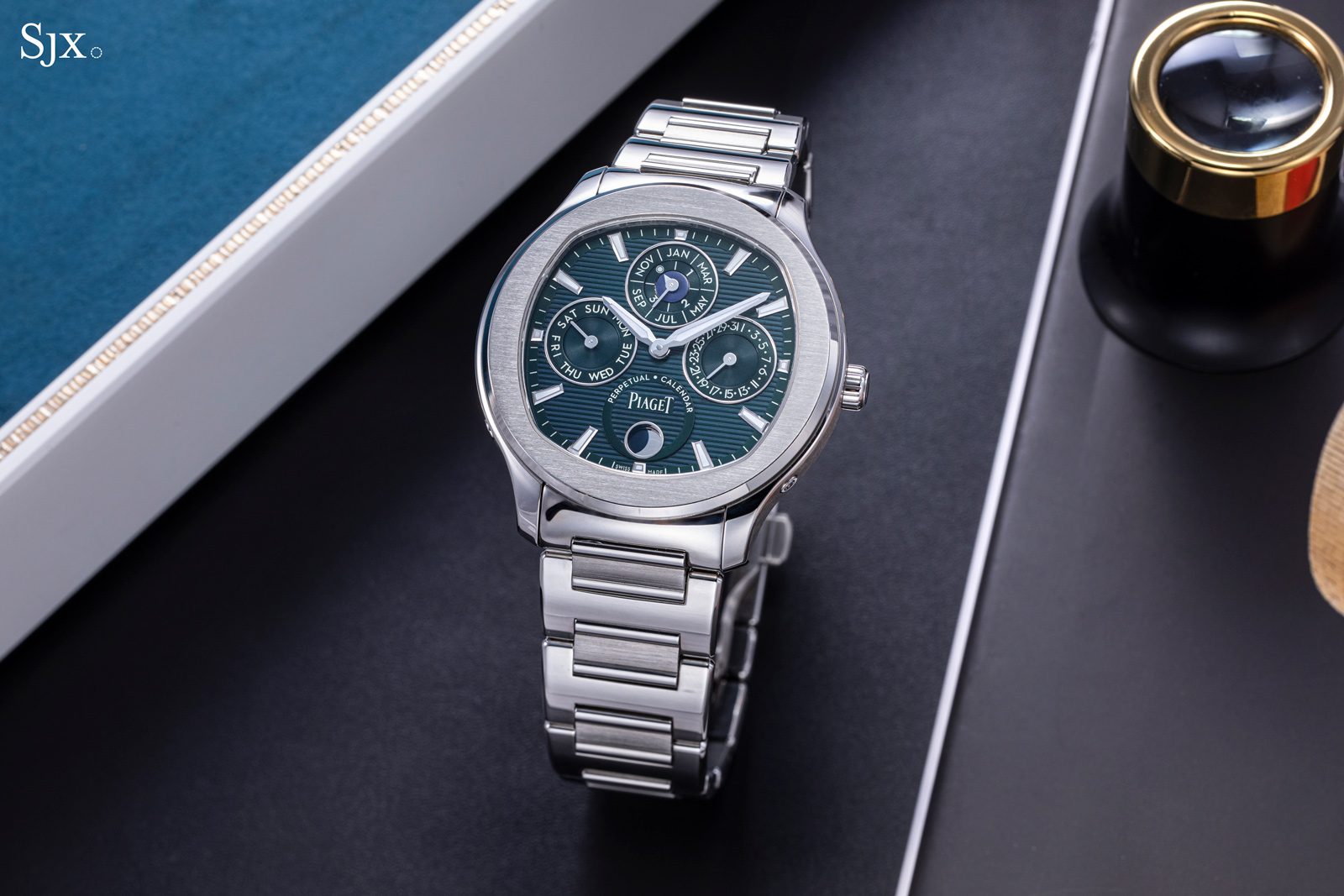
Having redesigned the Polo to suit contemporary tastes in 2016, Piaget now debuts most complicated watch in its sports watch line, the Polo Perpetual Calendar Ultra-Thin. With a steel case just 8.65 mm high, it’s dressed in the very current shade of dark green. Though the complication isn’t new for Piaget or even luxury-sports watches more broadly, the perpetual calendar takes the Polo into new territory as an upscale, complicated watch.
The model was introduced in 1979 as a chunky watch with a geometric design rendered entirely in yellow gold, reflecting the popular style of the era. Today’s Polo bears little resemblance to its historical namesake and instead opts for a design in tune with today’s preference for sports watches in that aren’t round.
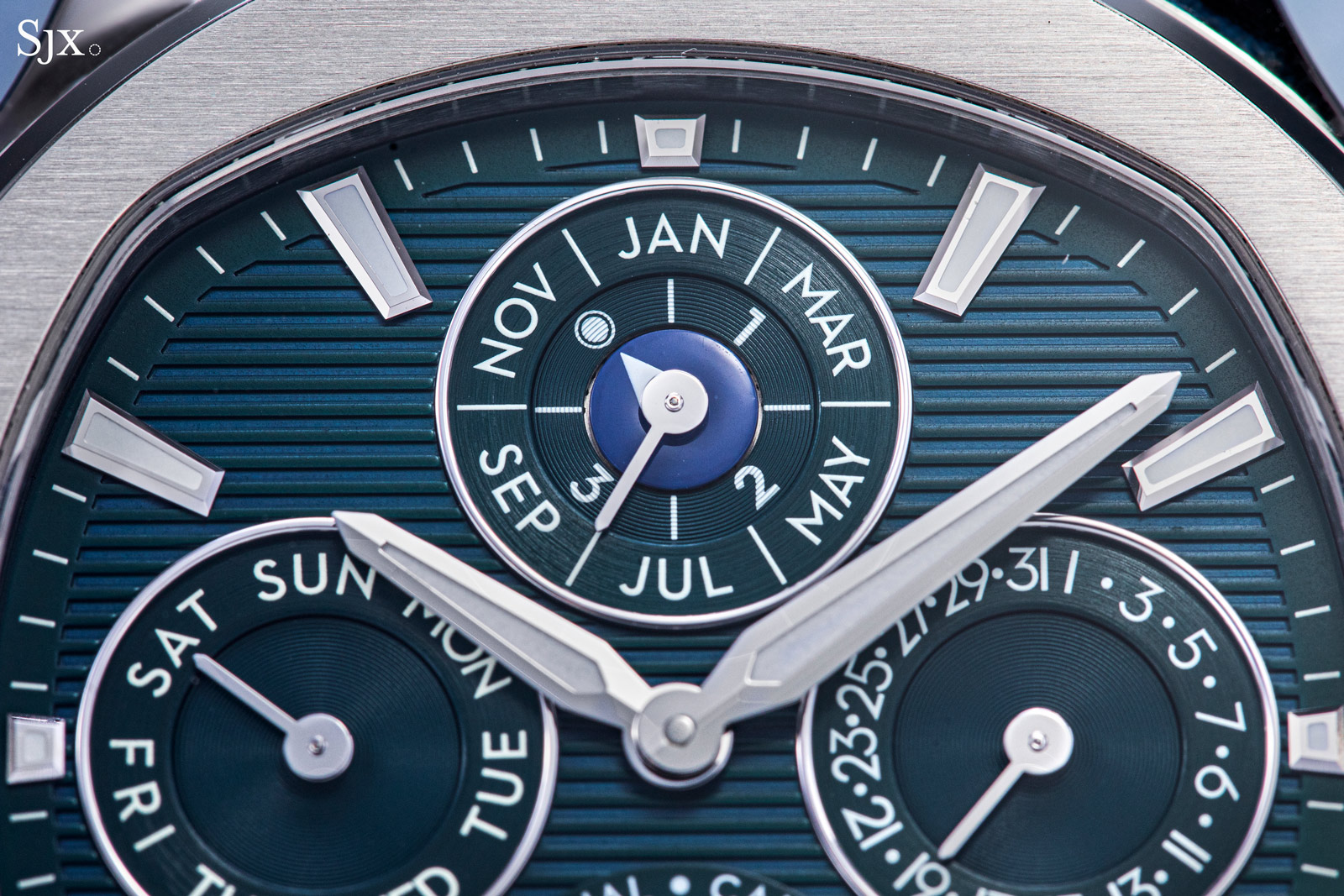
Initial thoughts
The new perpetual calendar is essentially the same proposition as its simpler brethren in the Polo line – a design and complication similar to more established luxury-sports watches, but at a more affordable price. So it has a patterned dial, cushion-shaped case, matching steel bracelet, and a retail price of US$58,500. That’s a reasonable ask considering its intrinsic features like finishing and complication.
On the other hand, the Patek Philippe Nautilus ref. 5740/1G or recently launched Audemars Piguet Royal Oak Perpetual Calendar Ultra-Thin ref. 26586TI cost well into the six figures – but they are also more sophisticated mechanically and executed with much more refinement. In short, the Polo perpetual is priced right relative to other watches in the category.
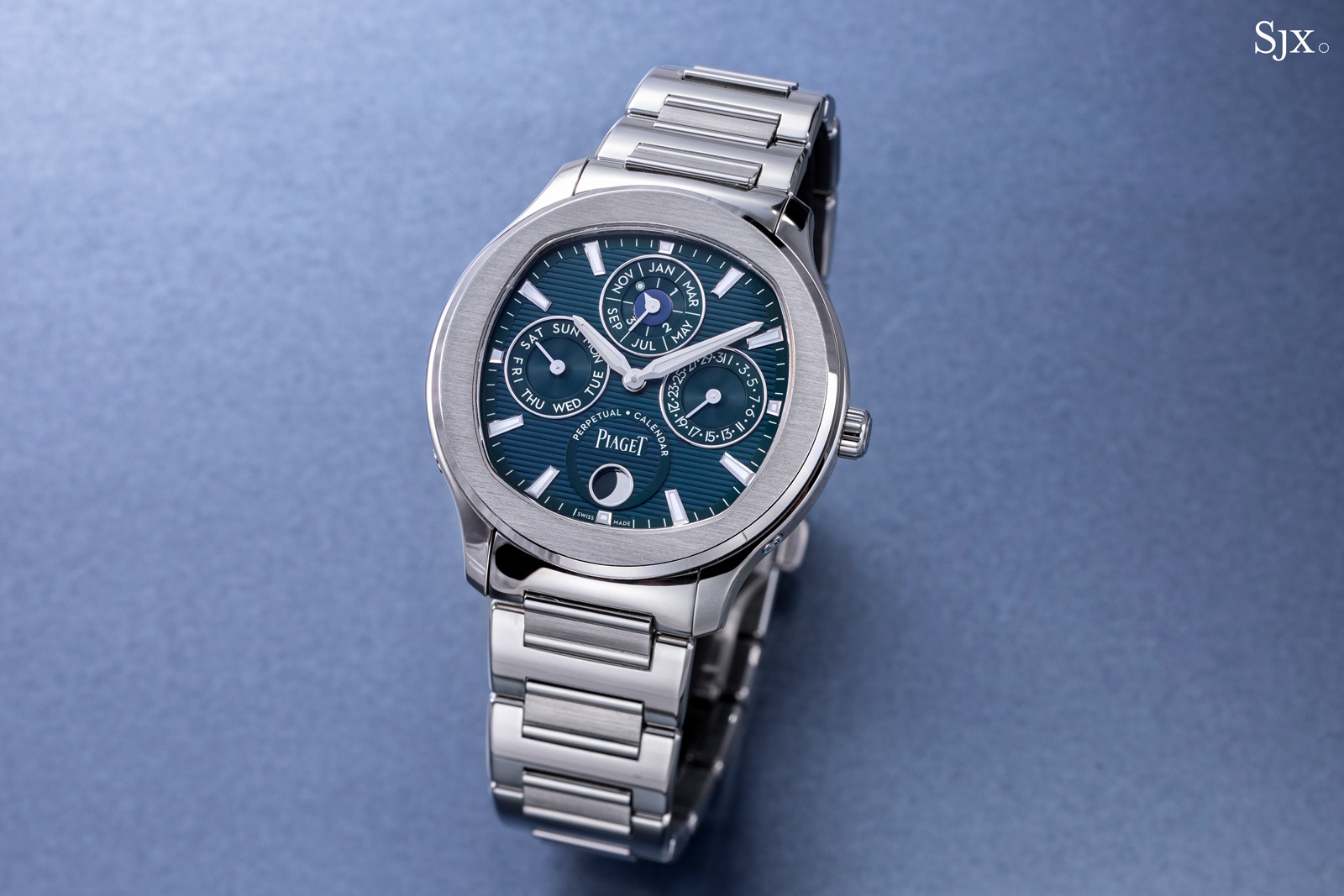
So the Polo perpetual does feel a bit derivative in terms of design. The styling easily evokes other watches in the segment – which can perhaps be seen as commercial necessity today – but it’s a handsome enough watch on its own. The dial design in particular is worth mentioning: though it has a traditional layout (due to the stock calendar module inside), the calendar indications are larger than usual, giving them prominence and legibility.
And the new perpetual also enjoys an upgraded bracelet that is tangible superior to that on its three-hand and chronograph counterparts in the Polo collection. While it retains the same design, the new bracelet gets better finishing and an improved quick-release mechanism amongst other upgrades.
Design evolution
The new Polo is a distant cousin of the original from 1979 that was designed by Yves Piaget, great-grandson of the brand’s founder. Reflecting the form of the 1970s and also the exuberance of the 1980s, the original Polo was a showcase for a cutting-edge movement of the day, the cal. 7P, then the world’s thinnest quartz movement, standing just 3.1 mm high.
Characterised by polished horizontal bands, the Polo was long-lived and evolved in a range of directions over the following decades, resulting in dozens of Polo models, most of which retained the horizontal bands in one form or another. But the original styling was abandoned in 2016 for the current Polo.
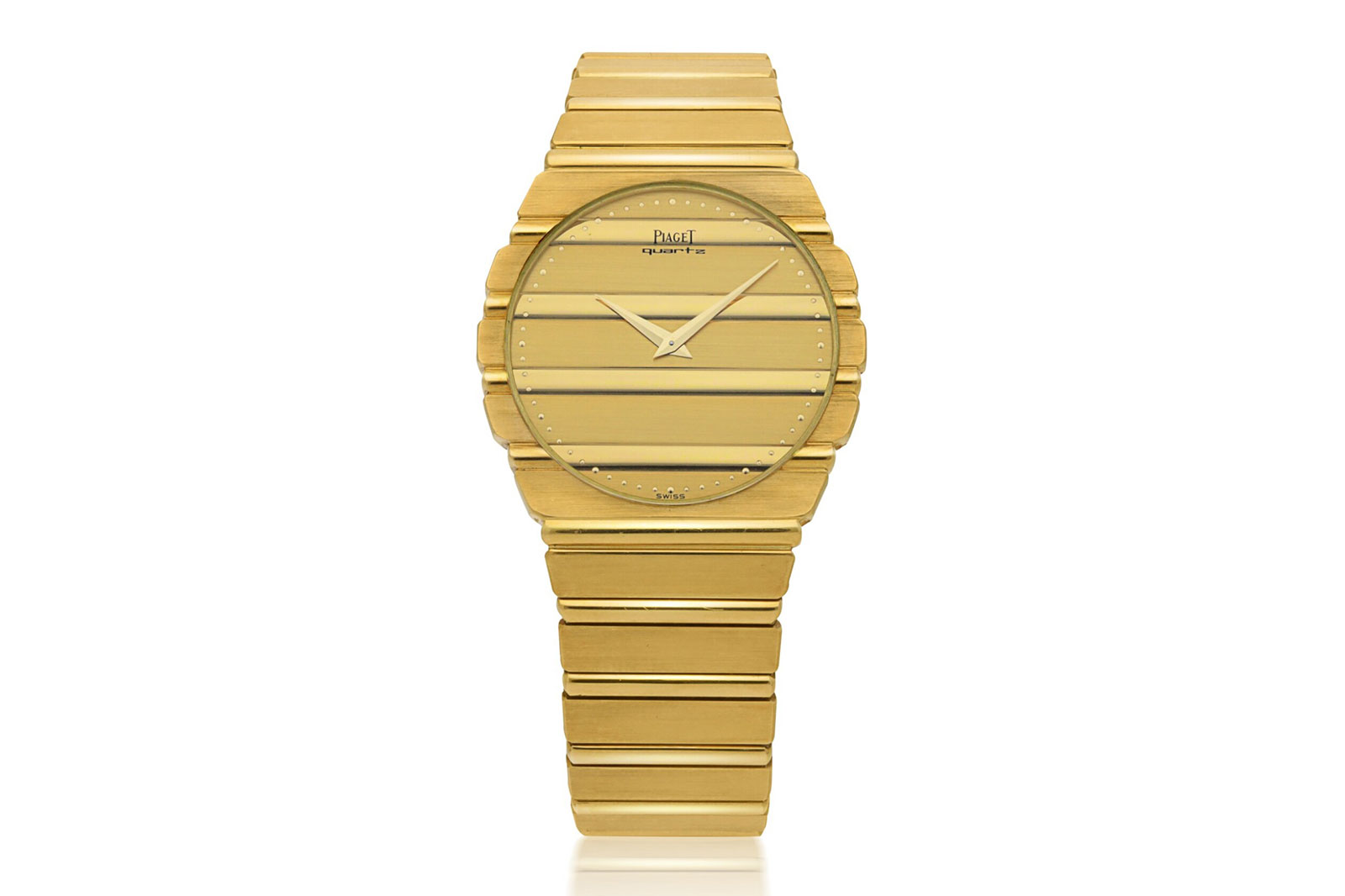
The original Piaget Polo ref. 7661 from 1979. Image – Sotheby’s
Unquestionably a more modern watch – but less original than the quirky 1979 design – the current Polo made its debut as the Polo S in both three-hand and chronograph variants.
With a cushioned-shaped case and horizontally-banded dial, the design did receive its share of flak at the time due to the similarity to famous luxury-sports watches, but it has proven to be a strong seller for Piaget, thanks in part to its comparable affordability.
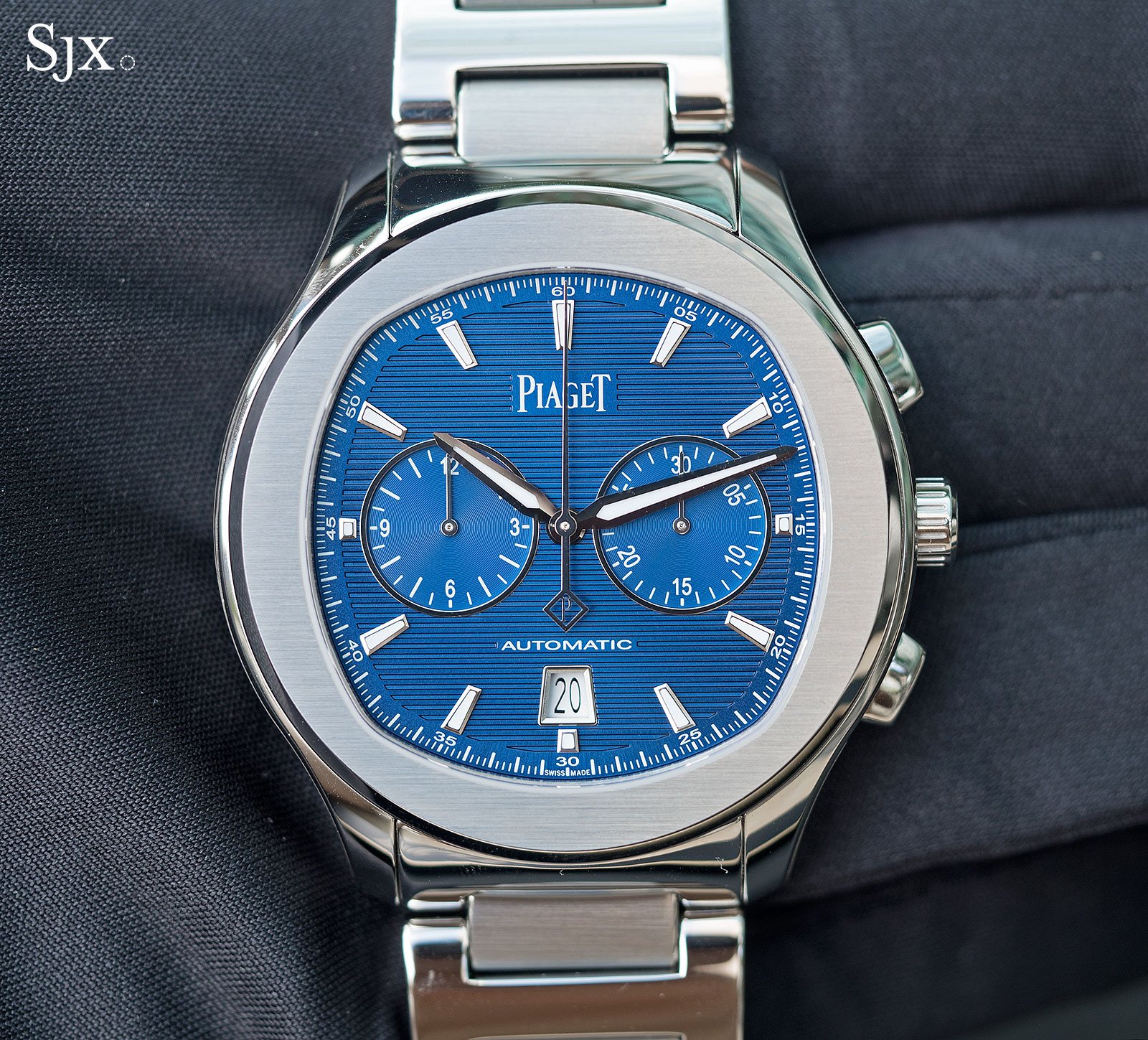
The Polo S Chronograph of 2016
The new perpetual naturally takes after the 2016 design. It retains the same cushion case and matching integrated bracelet but with more elegant proportions. The case of the perpetual is just 8.6 mm high, but a wide 42 mm in diameter.

It’s matched with a redesigned bracelet that looks the same at a distance but is more refined than the bracelets found on earlier models. The clasp is better designed and beefier, while the links now get a polished bevel on their outer edges. A more practical upgrade is the single-button quick-release system that is also used by Piaget’s sister brands like Cartier.
But perhaps the most notable tweak is the addition of polished bands on the centre links of the bracelet, a subtle nod to the design of the original Polo of 1979. Not only are they a historical reference, but the bands also give the bracelet a more distinctive look.
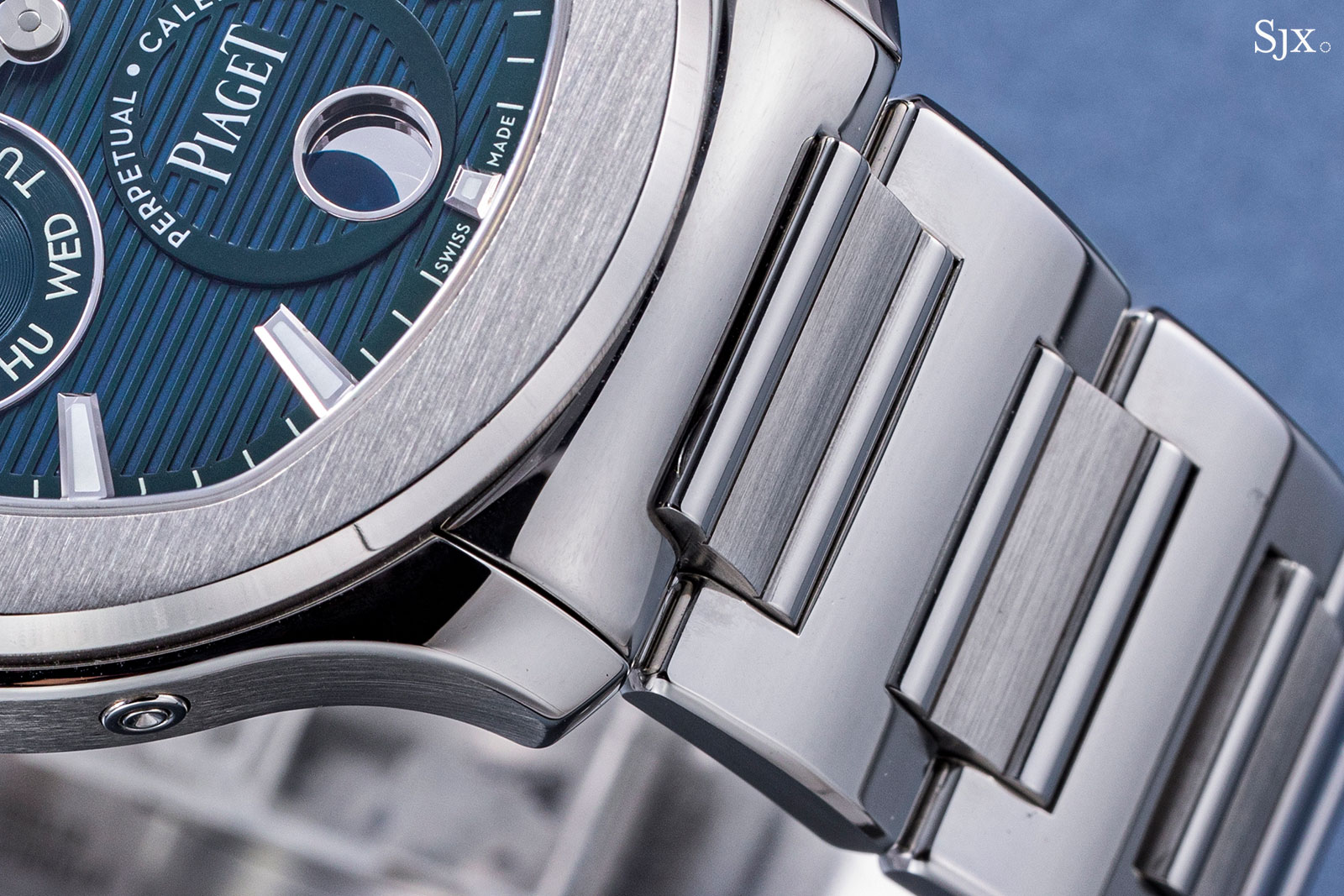
As for the dial, the Polo perpetual sticks to a currently popular colour. It’s a dark emerald green with the same horizontal gadroon pattern found on other Polo models that was inspired by the banded design of the 1979 original.
The perpetual calendar indicators are conventionally positioned at the quarters with moon phase at six o’clock. Legibility is good for this style of calendar, which can get crowded on the dial. Readability is also helped by the hands and hours markers, which are sizeable and filled with Super-Luminova.
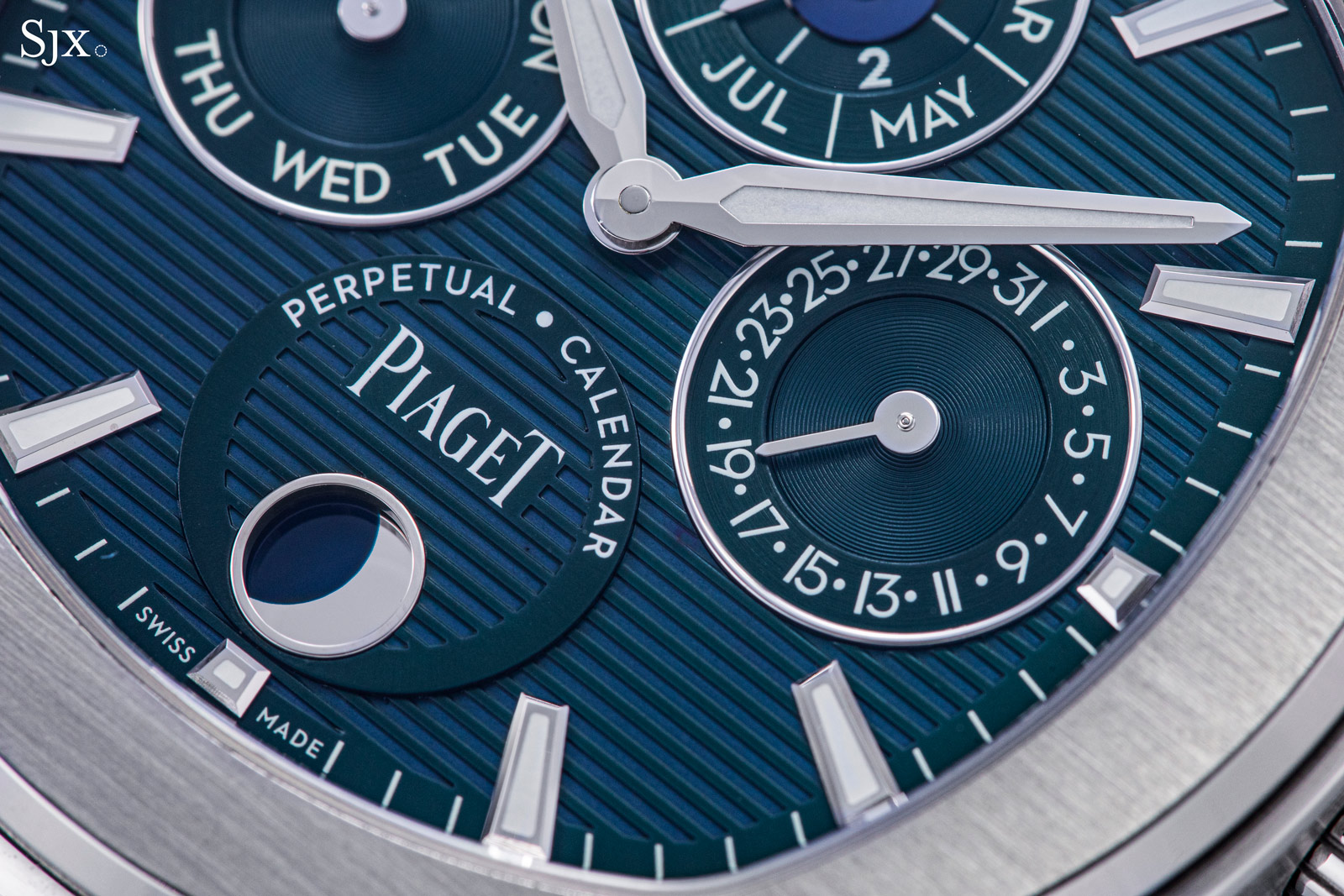
Like the other Polo models, the Polo perpetual has a display back to reveal the cal. 1255P. While technically a new calibre, it’s essentially the familiar ultra-thin cal. 1200 used across Piaget’s catalogue, mainly in Altiplano dress watches, but with the addition of a perpetual calendar module. Including the calendar module, the movement measures just 4 mm high.
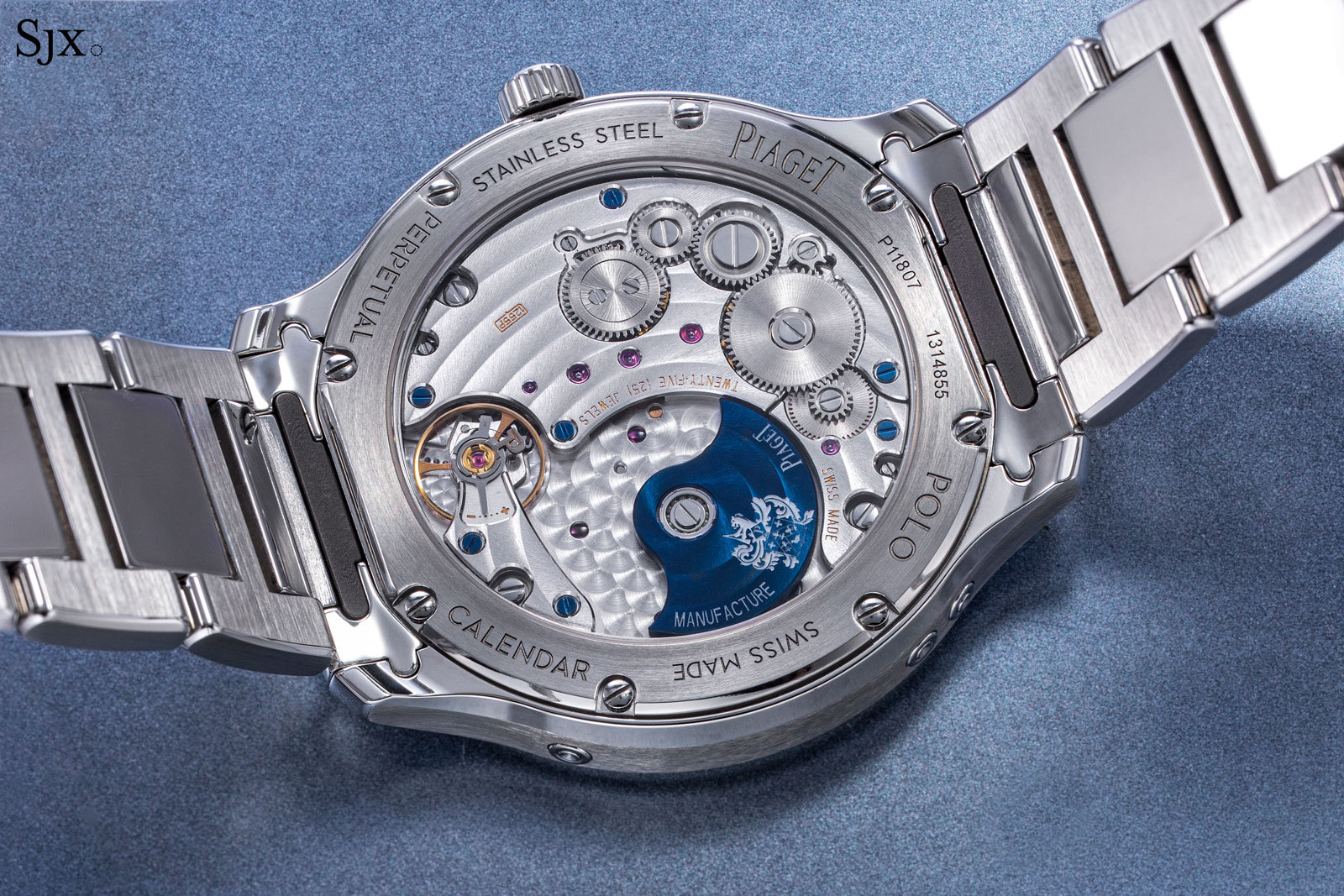
The movement finishing is typical Piaget and comparable to Jaeger-LeCoultre for instance. That is to say the decoration is neat and comprehensive, but largely done by machine.
One notable aesthetic upgrade is the “P” regulator index that replaces the Etachron equivalent in earlier versions of the movement. While both are equally functional, the “P” regulator is certainly more appealing visually.
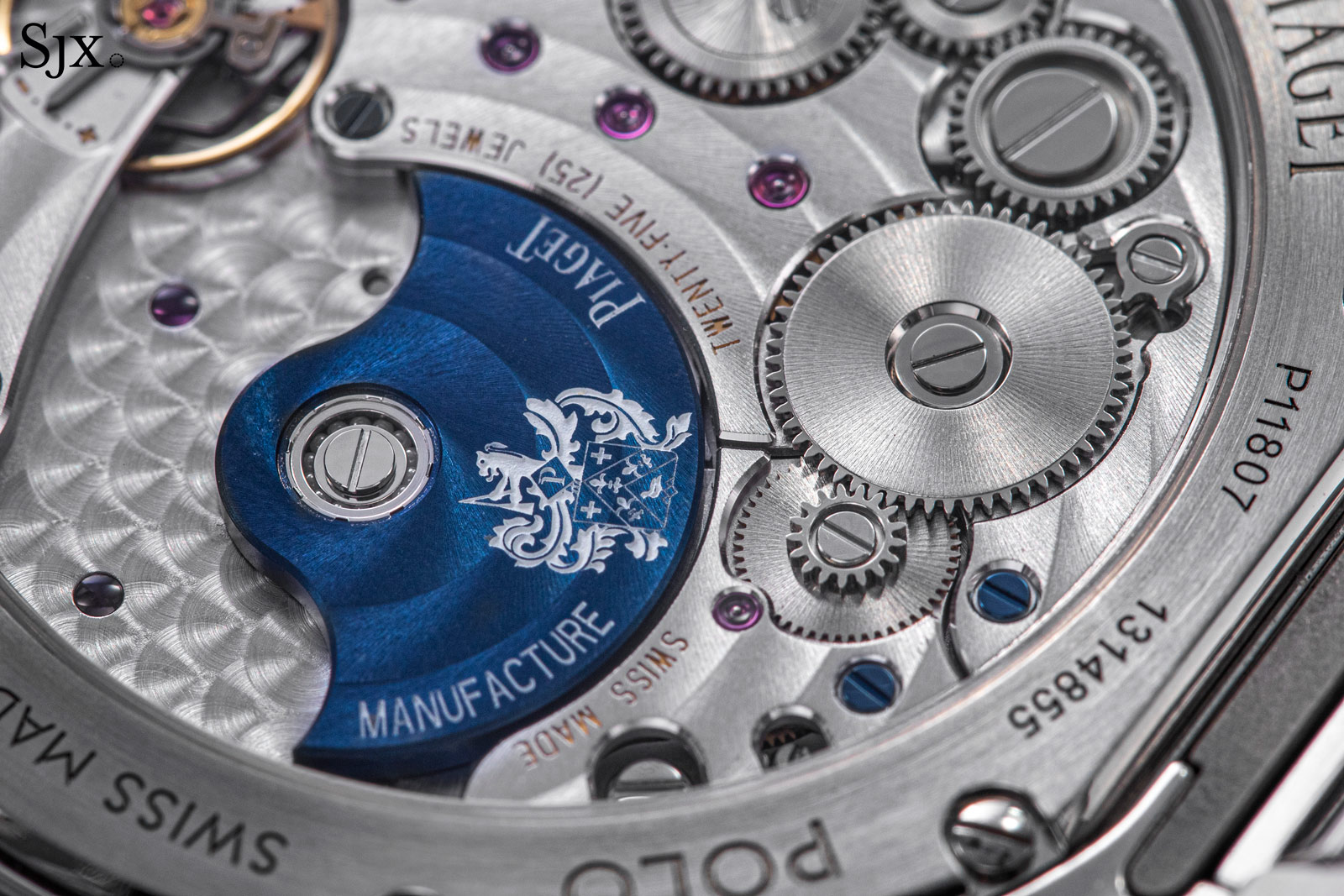
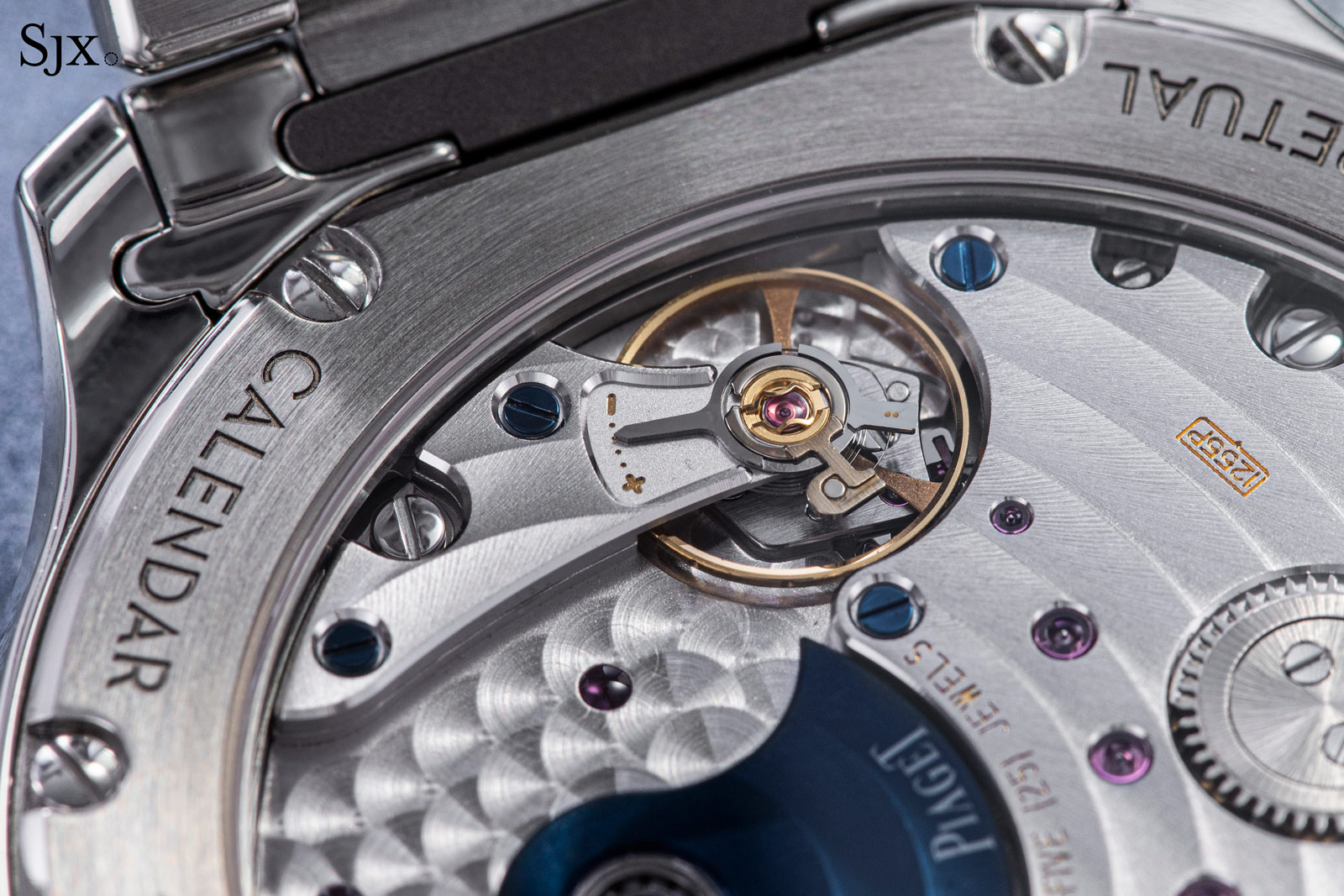
The regulator index is shaped like the Piaget “P”
And the perpetual calendar module is hidden under the dial, but its identity is easy to guess. It’s the Dubois Dépraz 5100, the most widely used perpetual calendar in Swiss watchmaking.
Found in watches across the price spectrum, from the Vacheron Constantin Overseas to the Habring² CFP, the module has been around for decades so it’s tried and tested. But because of its age its construction is traditional, making it slightly fiddly to adjust since all the calendar indications are set via recessed buttons on the case.
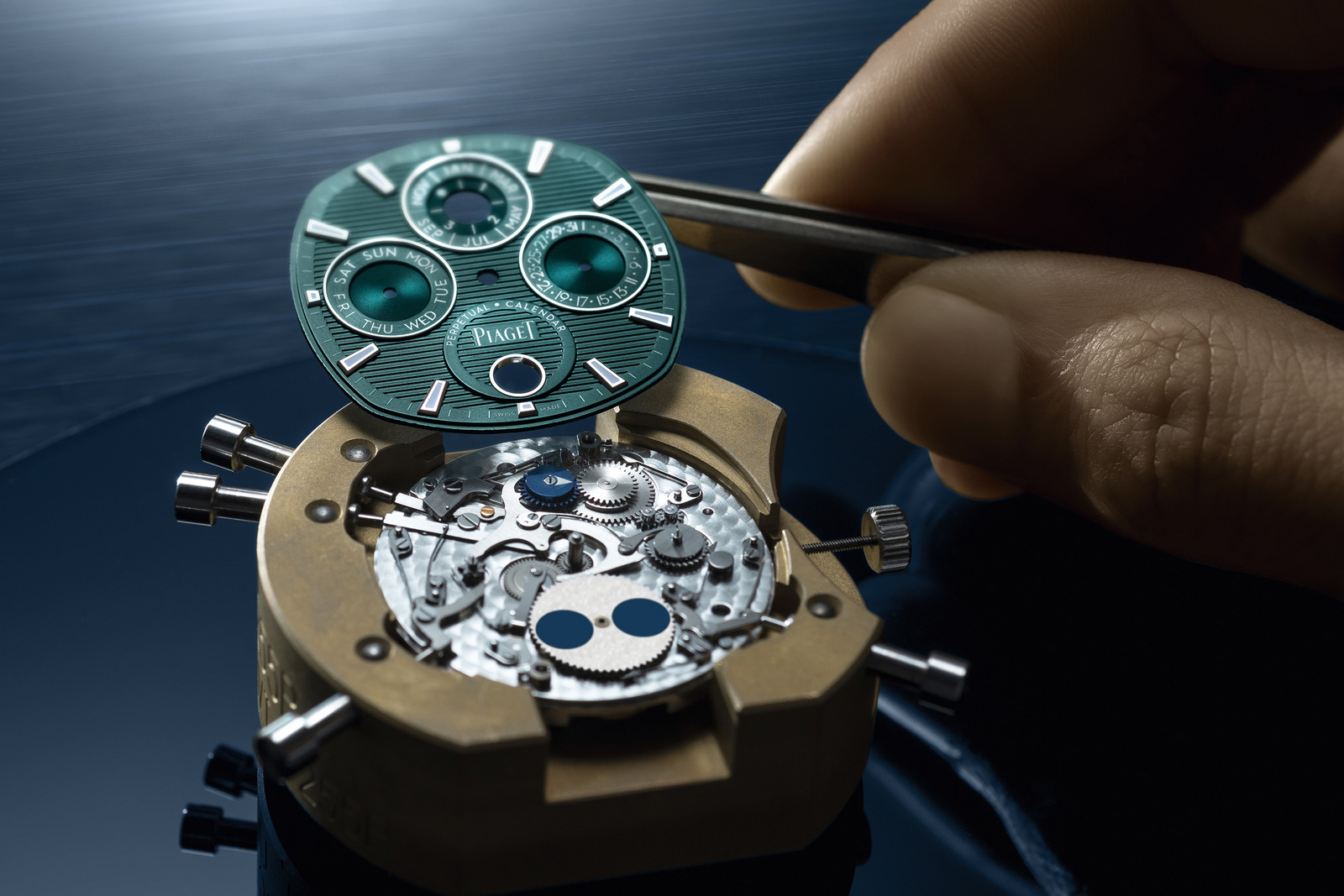
This under-dial image of the movement reveals the calendar module. Image – Piaget
Key facts and price
Diameter: 42 mm
Height: 8.65 mm
Material: Steel
Crystal: Sapphire
Water resistance: 30 m
Movement: Cal. 1255P
Functions: Hours, minutes, and perpetual calendar with moon phase
Winding: Automatic
Frequency: 21,600 beats per hour (3 Hz)
Power reserve: 42 hours
Strap: Steel bracelet and additional green rubber strap with folding clasp
Limited edition: No
Availability: At Piaget online shops, boutiques, and retailers
Price: US$58,500 (excluding taxes)
For more, visit Piaget.com.
Back to top.

